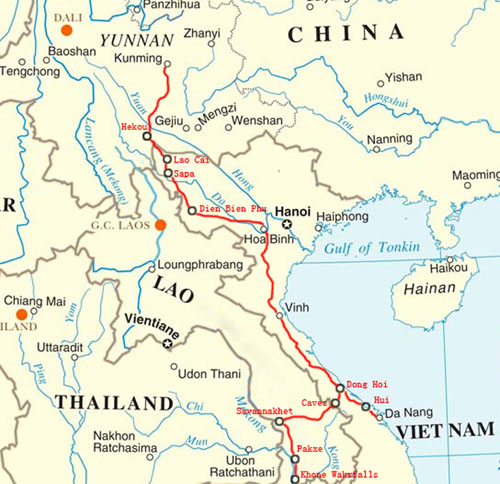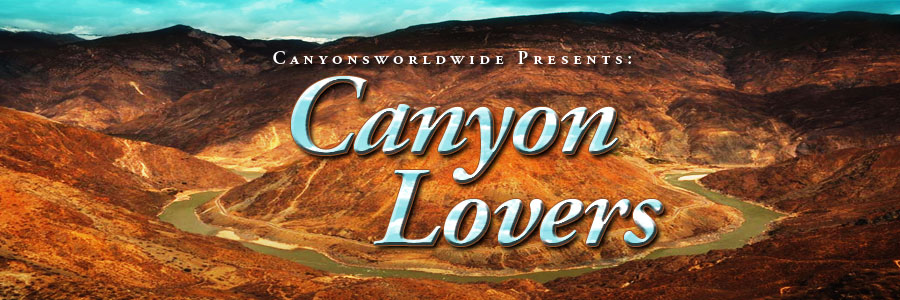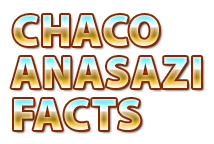Sep
27
Canyons and Caves of Vietnam and Laos
Exotic Canyons, Caves and Cultures of Indochina
Text and photography by Richard D. Fisher with photography by Maria Gates
Sapa Vietnam, Gateway to the Grand Canyon of Vietnam, is approached from the north from border town of Hekow China, a 5-7 hour bus ride south of Kunming Yunnan, Hakou is a tropical place hot and humid in the summer and very pleasant and dry in the winter. Hekow is a relatively clean border town reflecting the modernization and relative wealth of the “New China”. From the south Sapa is approached from Hanoi to Lao Cai by train (9+ hours) and then a spectacular 1-2 hour bus or private car ride up the mountain to the comfort of Sapa.
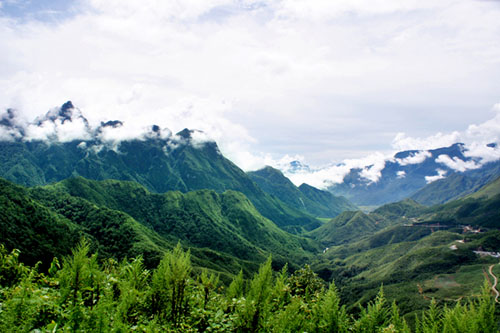
Fansipan Peak (3134 meters-10,308 feet) is called the “Roof of Indochina” dominates the view from Sapa but few see the canyons that are hidden in the mountains and rugged terrain on all sides. The exact extent of the “Grand Canyon of Vietnam” is still to be determined but preliminary results reveal that the low elevation is about 1000 meters making the canyon about 6,000 feet deep, roughly the size the Grand Canyon of the Colorado in Arizona USA.
On my two visits to the area weather was a big factor for my exploration and photography. In mid-winter and early spring Sapa is very often fogged in completely for weeks at a time and in the summer monsoon rains create incredible thunder storms and again, lots of foggy days. In the summer, however, I found some incredible sunny afternoons. Late spring late fall are perhaps the best times to tour this spectacular region.
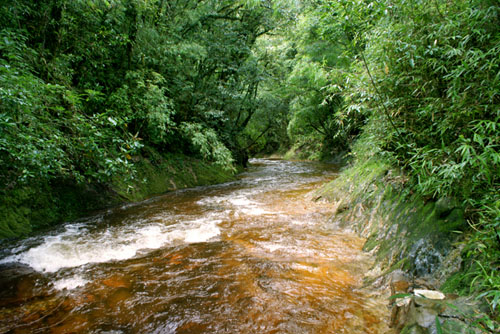
Unexplored slot canyons like the one above abound in this region which host the Grand Canyon Vietnam.
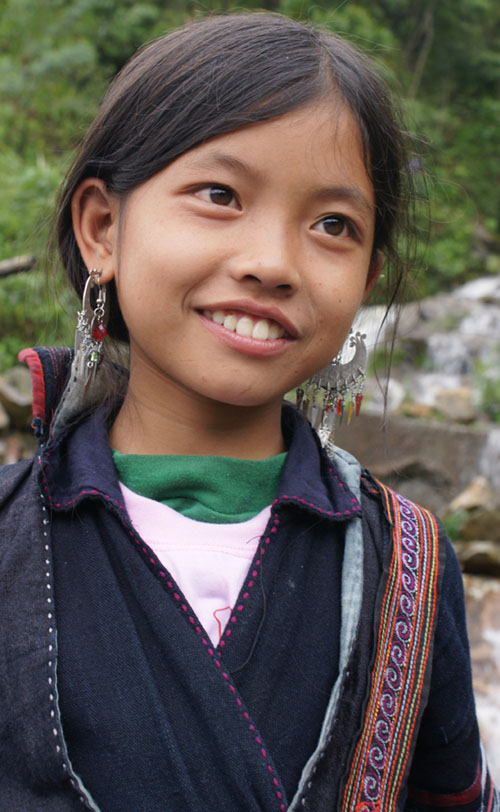
Besides being the gateway to the Grand Canyon of Vietnam, Sapa is home to some of the most diverse hill tribes in S.E. Asia. Hmong and Yao groups are seen in the largest numbers but Tay and Giay are selling crafts as well. Until 1910 or so these tribal groups dominated the high mountains and deep canyons. After that the French stated colonization here due to the “healthy climate” the precipitous lands were slowly dominated in turn by the French followed by the lowland Vietnamese (Kinh) and now by…tourist from all over the world.
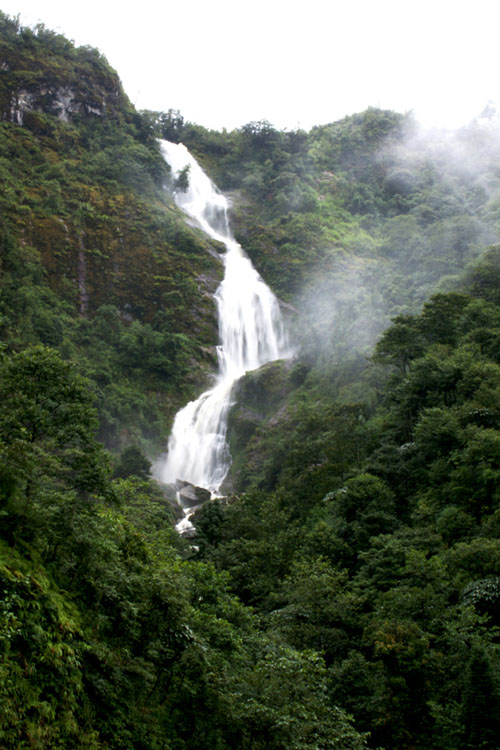
This region is now protected as the “Phong Nha-Ke Bang” National Park as recognized by UNESCO World Heritage Site (2003). This is a Limestone (Karst) geological topography abounding in caves and underground rivers (estimated at 300+) but also hundreds of “slot canyons” many of which are still unexplored. This is an extension of the famous Annamite Range which runs south along the Laos-Vietnam border for hundreds of kilometers. This is one of the two largest Karst/Limestone regions on the planet Earth. Technically the limestone is from the Palaeozoic era some 400 million years ago.
I stayed in several hotels in Sapa prices ranging from 8-30 USD per night, but I recommend the 3 Star Holiday Sapa due to their English speaking staff:
Holiday Sapa
16 Muong Hoa St.
Lao Cai Vietnam
(84) 203-873-874
info@holidaysapa.com
www.holidaysapa.com
Traveling south from Sapa one can visit Dien Bien Phu the township where the native Vietnamese defeated the colonial French colonist in a 6-7 hour private hire car or a 10-12 hour bus ride. This drive is overflowing with conical Karst mountain peaks, small canyons,valleys rivers, agricultural villages connected with very winding narrow but mostly paved roads. From there one can cross into Laos or continue south to the coast and down to the town of Dong Hoi, the gateway to the most spectacular caves yet discovered in Vietnam. This region is now protected as the “Phong Nha-Ke Bang” National Park as recognized by UNESCO World Heritage Site (2003). This is a Limestone (Karst) geological topography abounding in caves and underground rivers (estimated at 300+) but also hundreds of “slot canyons” many of which are still unexplored. This is an extension of the famous Annamite Range which runs south along the Laos-Vietnam border for hundreds of kilometers. This is one of the two largest Karst/Limestone regions on the planet Earth. Technically the limestone is from the Palaeozoic era some 400 million years ago.
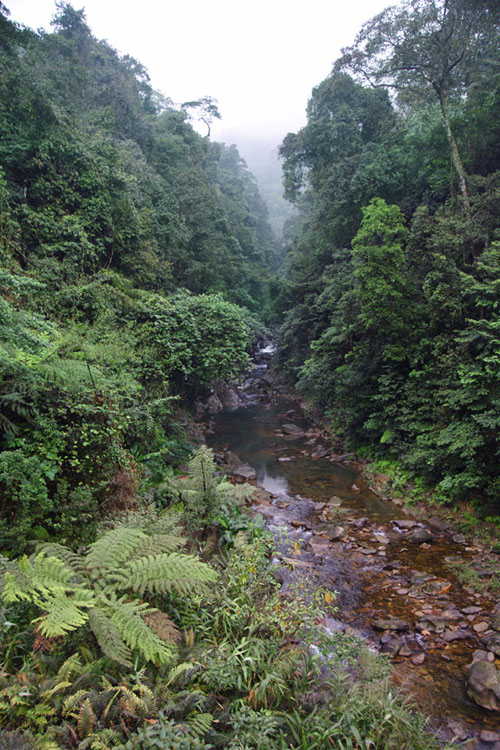
As exotic a system of canyons and caves as found anywhere in the world in the Central Vietnam Highlands.
It was a long and grueling 2 day bus ride from Dien Bien Phu to Dong Hoi gate way ti the cerntral highlands. There I found a wonderful small family style hotel specializing in catering and providing assistance to cave explorers and environmental researchers. The owners there provide by far the best service to anyone wanting to see world class caves, rivers, canyons, and wildlife in this spectacular region.
Sy and Nga Ho Van run the Nam Long Hotel:
Address: 22 Ho Xuan Huong st – Dong Hoi city- Quang Binh Province, Vietnam
Tel: (84-52) 821851 ; Fax: (84-52) 829774
Email: sytrang25@yahoo.com
Website: www.hotels84.com/quangbinh-hotels/namlonghotel.htm
Room rate: from 10-16 USD
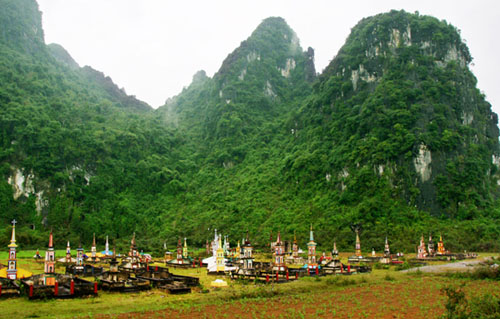
Conical Karst peaks dominate foothills landscapes of central Vietnam north to Dien Bien Phu and starting near Sapa.
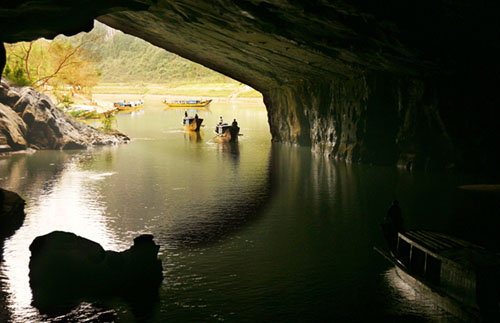
Phong Nha Cave
A wonder of recent historical importance, this cave played a key role in conflicts since the 1950′s as it provided an air raid shelter for the population north of the DMZ. The Son river actually penetrates into the mountain for over a half a mile and from the mouth where there are 14 chambers and secondary corridors that branch in all directions which which served variously as a hospital, living quarters and storage areas large enough for a small city. There are numerous natural features such as the Lion, the Fairy Caves”, the Royal Court and the Buddha seen on the daily tours.
This tour actually starts and ends with a half hour boat trip on the river with about a two hour walking tour upon sailing into the cave.
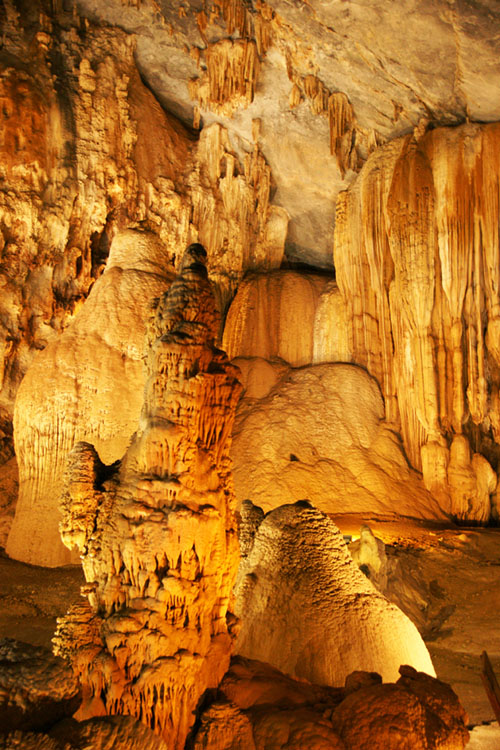
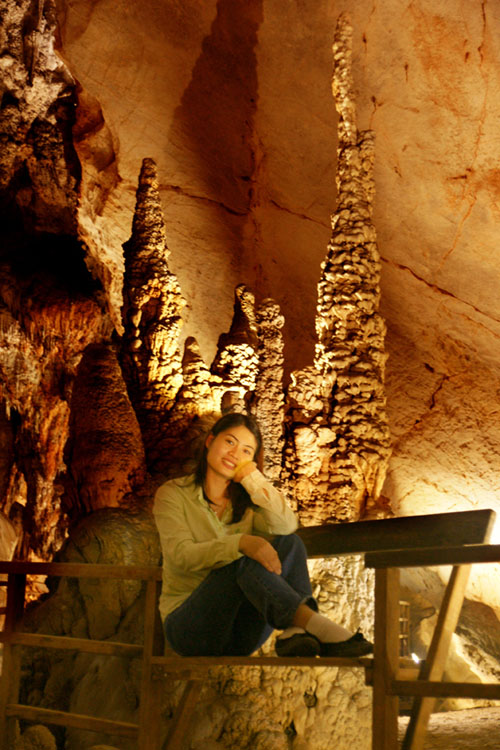
Thien Duong Cave
Also called “Paradise” cave this is a newly found cave in the National Park. Some of the most beautiful and spectacular stalactites and stalagmites in the Park are found in this cave. The cave has been leased to a private company which has done a good job in developing it by putting in professionally designed road access, board walks and lighting. This cave was opened to the public in early 2011. This cave is about 70 km or 1 hour+ by private car from Dong Hoi on a paved road that winds through the rice paddies and into the mountains and canyons to reach the cave parking area. In January 2011 the entry fee was about $6 USD.
Son Doong Cave
This mountain river cave gained much international attention in the last year as it has been designated by National Geographic USA and the British Cave Research Association as the largest cave in the world between the years of 2009-2011.
Wildlife of the Vietnam NationalParks in the Annamite Range
The forest is also home to 98 families, 256 genera and 381 species of vertebrates. Sixty-six animal species are listed the Vietnamese in the Red List of Endangered species and are still found here in these protected parks.
In 2005, a new species of gecko (Lygosoma boehmeiwas) was discovered here by a group of Vietnamese biologists together with biologists working for the park, Cologne Zoo in Germany and the Saint Petersburg Wild Zoology Institute in Russia.The Gaur and one species of eel have been discovered in this park.[1] Ten new species never seen before in Vietnam were discovered by scientists in this national park. The Park is home to significant populations of primates in Vietnam, with ten species and sub-species. These include the globally vulnerable Pig-tailed Macaque, Assamese Macaque, Stump-tailed Macaque and White-cheeked Crested Gibbon (Nomascus leucogenys and Nomascus leucogenys siki). The Park is probably home to the largest population of Francois’ Langur in Vietnam, including two different forms of the species. The area is highly significant for its population of Hatinh Langur and Black Langur. It is undoubtedly the largest population of these species in the world, and probably the only population represented in a protected area. Other endangered large mammals include theMainland Serow (Capricornis sumatraensis), Giant Muntjac (Megamuntiacus vuquangensis) and possibly the Saola (Pseudoryx nghetinhensis). TheAsiatic Black Bear (Selenarctos thibetanus) and Sun Bear (Helarctos malayanus) are confirmed. Other smaller mammals include Sunda Pangolins (Manis javanica) and the recently discovered Striped hare, called locally ‘tho van’ (Nesolagus timminsii). Ten bat species listed in the IUCN List of Threatened Species have been recorded in this park.Of the 59 recorded reptile and amphibian species, 18 are listed in Vietnam’s Red Data Book and 6 are listed in the IUNC Red List of Threatened Animals. The 72 fish species include 4 species endemic to the area, including Chela quangbinhensis.
The park is home to over 200 bird species, inclusive of several rare birds such as: Chestnut-necklaced Partridge, Red-collared Woodpecker, Brown Hornbill, Sooty Babbler andShort-tailed Scimitar-babbler. There is good evidence for the Vietnamese Pheasant (Lophura hatinhensis) and Imperial Pheasant (Lophura imperialis) species at Phong Nha – Kẻ Bàng area. An initiative survey conducted by Russian and Vietnamese scientists from Vietnam-Russia Tropical Centre (funded by WWF) recorded 259 butterfly species of 11 families. Almost all major butterfly taxa in Vietnam can be found in the Phong Nha – Ke Bang National Park.
The Phong Nha-Ke Bang National Park was recognized by UNESCO in 2003 and again in 2007 as a World Natural Heritage Site.
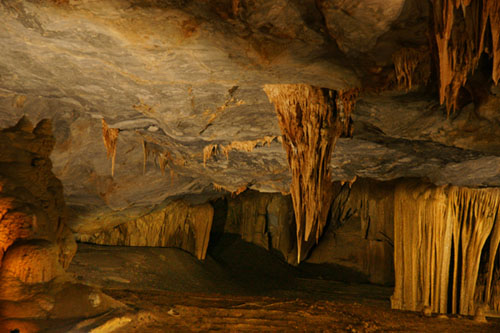
Son Doong Cave
This mountain river cave gained much international attention in the last year as it has been designated by National Geographic USA and the British Cave Research Association as the largest cave in the world between the years of 2009-2011.
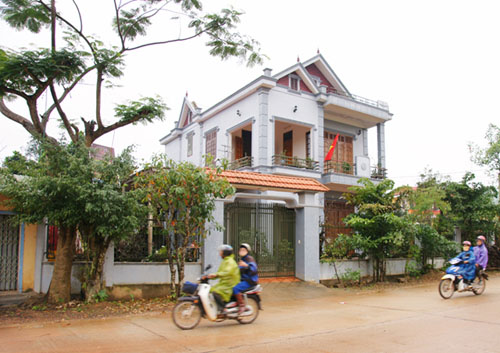
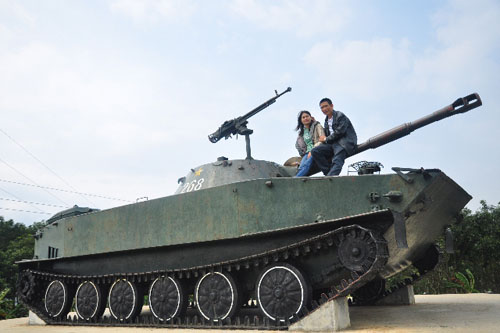
It is so good to see that such good hearted people have survived the dark years and are living so happily in our times to be our host, guides and now friends. This lovely couple welcomes guest from all countries globally with warm and hospitable services and true comradeship as well.
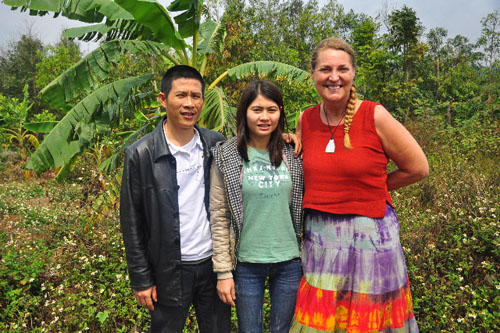
Into Laos….
Feb. 13, 2011
Lao Bao, southwest of Dong Hoi and near Dong Ha in Central Vietnam, is a good border crossing to obtain a 30-day Lao visas (US$30) are available on arrival in Nam Phao. If one is traveling the other way to Vietnam from Laos, Vietnamese visas still need to be arranged in advance; available at the Vietnamese embassy in Vientiane. Due to the border crossing problems encountered there we opted to hire our friends from Sy and Naga Ho Van to drive us to the border crossing. From the Vietnamese side it’s a short walk to the Laos border. Once in Laos, motor bikes, jumbo (three-wheeled taxis) and sawngthaew (pick-up trucks) are available to Lak Sao the first place with hotels and cafes. We were glad to be well rested for this part of the trip as it was a very difficult 3 day transit to Paksi the gateway to the Bolaven Plateau.
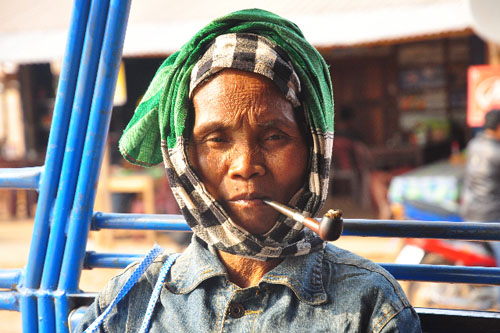
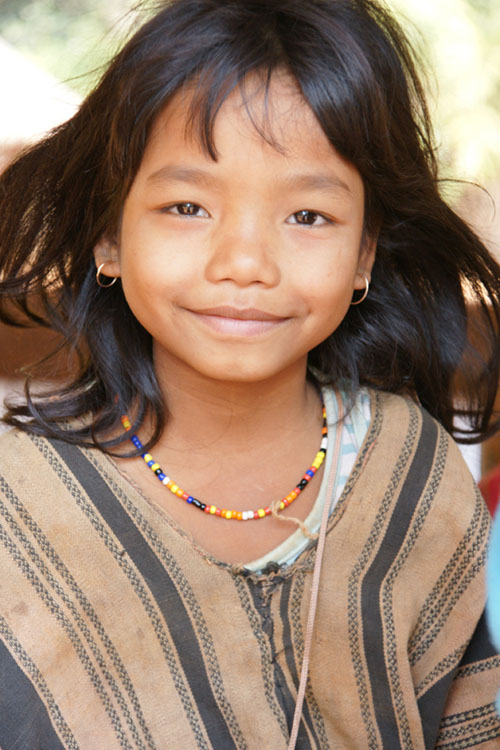
Pakse (also spelled Pakxi) was founded by the French in 1905 as an administrative outpost, Pakse sits at the confluence of the Mekong River and the Se Don (Don River). The town has doubled in size since construction of the new bridge across the Mekong in 2002, facilitating a tourist crossing as well as considerable trade into Thailand. Pakse is the gate way to the canyons of the Bolaven Plateau.
Bolaven Plateau
Is home to some of the most spectacular waterfalls and canyons in Southeast Asia. The geology of the plateau is igneous which contrast sharply with the Karest Limestone to the Annamite ranges to the north.
The area wasn’t farmed intensively until the French started planting coffee, rubber trees and bansidered strategically vital to both the Americans and North Vietnamese, as evidenced by the staggering amount of UXO (unexploded ordnance) still lying around. The slow process of clearing UXO continues, but in areas where it has been cleared, both local farmers and larger organisations are busy cultivating coffee (see Kąaféh Láo ). Other local products include delicious tropical fruits. The largest ethnic group on the plateau is the Laven (Bolaven means ‘home of the Laven’). Several other Mon-Khmer ethnic groups, including the Alak, Katu, Ta-oy (Tahoy) and Suay, also live on the plateau. Katu and Alak villages are distinctive because they arrange their palm-and-thatch houses in a circle.
Among other tribes, the animistic-shamanistic Suay (who call themselves Kui) are said to be the best elephant handlers. Elephants were used extensively for clearing land and moving timber, though working elephants are hard to find these days.
The Alak, Katu and Laven are distinctive for the face tattoos of their women, a custom slowly dying out as Lao influence in the area increases. Several Katu and Alak can be visited along the road between Pakse and Paksong at the western edge of the plateau, and along the laterite road that descends steadily from Muang Tha Taeng (That Heng) on the plateau to Beng, in Salavan Province.
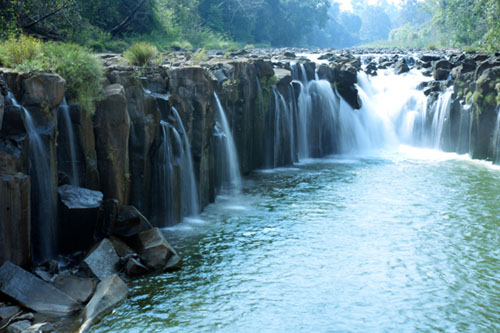
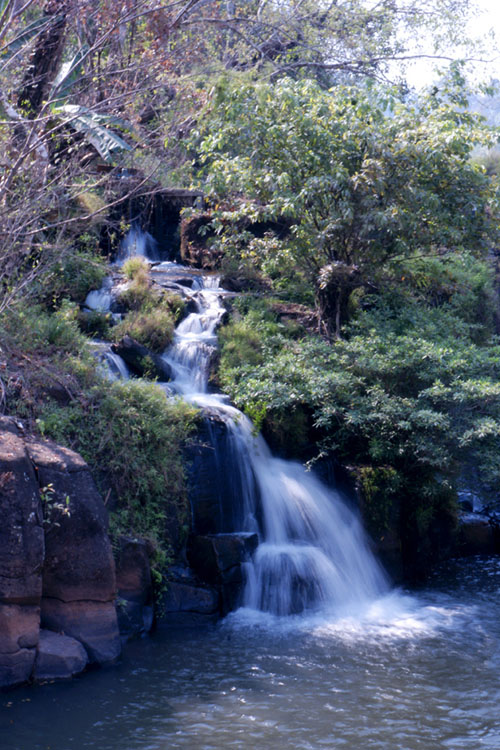
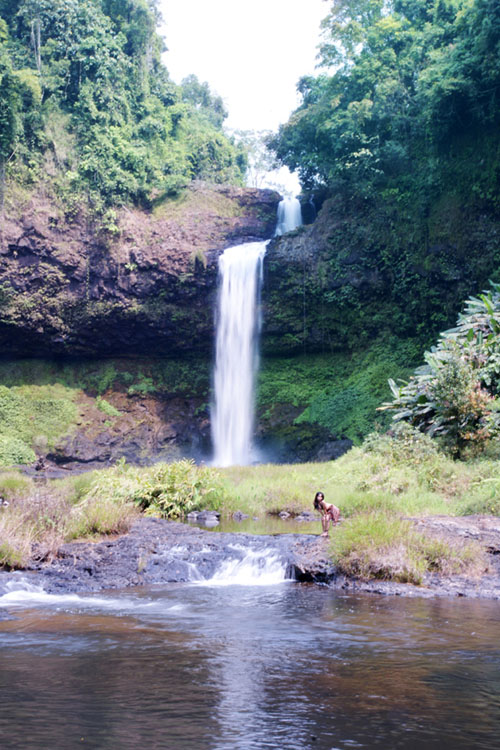
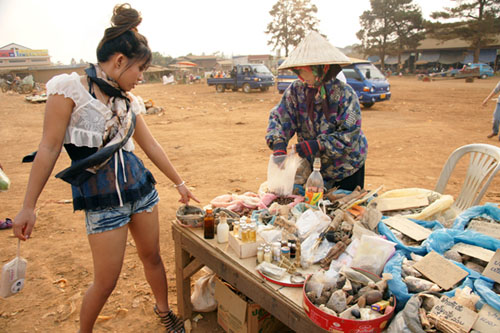
About 40km east of Paksi is in Paksong which host a large day market frequented by many tribal groups. Paksong is the center the coffee growing in Laos and claims to have the “best cup of coffee in the world”. The plateau has many several spectacular waterfalls, including Tat Fan few kilometres west of Paksong, and Tat Lo on Rte 20 to Salavan.nanas in the early 20th century. Many of the French planters left following independence in the 1950s and the rest followed as US bombardment became unbearable in the late ’60s.
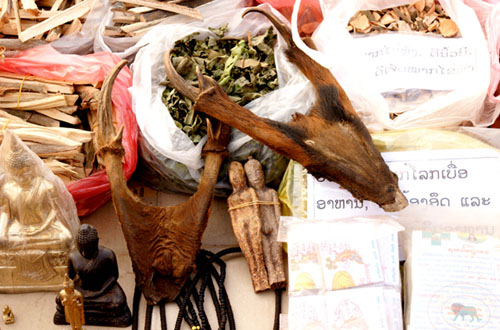
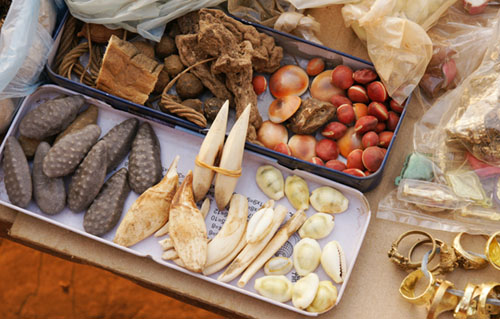
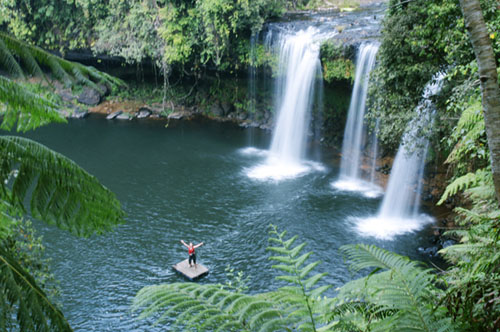
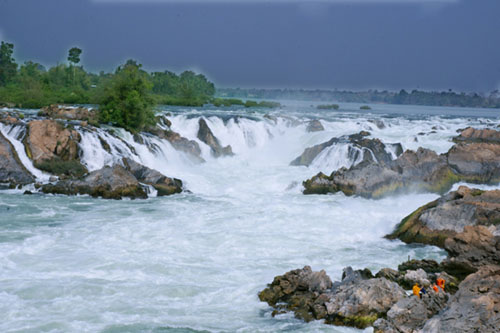
We variously took several bus rides and a boat ride down the river through the 4,000 islands and stayed on the most exotic “hippy island” where all the young European travelers hung out on the Mekong Beach.
The Khone waterfalls and Pha Pheng is a waterfall located on the Mekong River in southern Laos, near the border with Cambodia. The Khone Falls are the largest in southeast Asia and they are the main reason that the Mekong is not fully navigable into China. The falls are characterised by thousands of islands and countless
waterways, giving the area its name Si Phan Don or ‘The 4,000 islands’. The highest falls reach to 21 metres (69 ft); a succession of falls stretch 9.7 km (6.0 mi) of the river’s length.
